
The Arctic National Wildlife Refuge or Arctic Refuge is a national wildlife refuge in northeastern Alaska, United States, on traditional Gwich'in lands. The refuge is 19,286,722 acres (78,050.59 km2) of the Alaska North Slope region, with a northern coastline and vast inland forest, taiga, and tundra regions. ANWR is the largest national wildlife refuge in the country, slightly larger than the Yukon Delta National Wildlife Refuge. The refuge is administered from offices in Fairbanks. ANWR is home to a diverse range of endemic mammal species; notably, it is one of the few North American locations with all three endemic American ursids—the polar bear, grizzly bear, and American black bear, each of which resides predominantly in its own ecological niche. Besides the bears, other mammal species include the moose, caribou, wolves, red and Arctic fox, Canada lynx, wolverine, pine marten, American beaver, and North American river otter. Further inland, mountain goats may be seen near the slope. Hundreds of species of migratory birds visit the refuge yearly, and it is a vital, protected breeding location for them. Snow geese, eiders and snowy owl may be observed as well.

The Iñupiat are a group of Indigenous Alaskans whose traditional territory roughly spans northeast from Norton Sound on the Bering Sea to the northernmost part of the Canada–United States border. Their current communities include 34 villages across Iñupiat Nunaat, including seven Alaskan villages in the North Slope Borough, affiliated with the Arctic Slope Regional Corporation; eleven villages in Northwest Arctic Borough; and sixteen villages affiliated with the Bering Straits Regional Corporation. They often claim to be the first people of the Kauwerak.

The Brooks Range is a mountain range in far northern North America stretching some 700 miles (1,100 km) from west to east across northern Alaska into Canada's Yukon Territory. Reaching a peak elevation of 8,976 feet (2,736 m) on Mount Isto, the range is believed to be approximately 126 million years old.

The Alaska North Slope is the region of the U.S. state of Alaska located on the northern slope of the Brooks Range along the coast of two marginal seas of the Arctic Ocean, the Chukchi Sea being on the western side of Point Barrow, and the Beaufort Sea on the eastern. With the exception of the highway connecting Fairbanks to Prudhoe Bay, the region is disconnected from the rest of the Alaskan road system and relies mostly on waterways and small airports for transportation due to the Brooks Range secluding the region from the rest of the state.

Gates of the Arctic National Park and Preserve is an American national park that protects portions of the Brooks Range in northern Alaska. The park is the northernmost national park in the United States, situated entirely north of the Arctic Circle. The area of the park and preserve is the second largest in the U.S. at 8,472,506 acres ; the National Park portion is the second largest in the U.S., after the National Park portion of Wrangell–St. Elias National Park and Preserve.
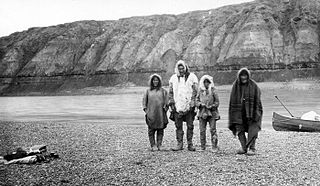
The Colville River is a major river of the Arctic Ocean coast of Alaska in the United States, approximately 350 miles (560 km) long. One of the northernmost major rivers in North America, it drains a remote area of tundra on the north side of the Brooks Range entirely above the Arctic Circle in the southwestern corner of the National Petroleum Reserve-Alaska. The river is frozen for more than half the year and floods each spring.The Colville River and its adjacent hills are home to a variety of Arctic wildlife, including Lake Teshekpuk and Central Arctic caribou herds, and hawks.

The Gwichʼin are an Athabaskan-speaking First Nations people of Canada and an Alaska Native people. They live in the northwestern part of North America, mostly north of the Arctic Circle.

The question of whether to drill for oil in the Arctic National Wildlife Refuge (ANWR) has been an ongoing political controversy in the United States since 1977. As of 2017, Republicans have attempted to allow drilling in ANWR almost fifty times, finally being successful with the passage of the Tax Cuts and Jobs Act of 2017.

The Porcupine caribou(Rangifer tarandus groenlandicus) is a herd or ecotype of barren-ground caribou, the subspecies of the reindeer or caribou found in Alaska, United States, and Yukon and the Northwest Territories, Canada.

Laurence T. Fessenden is an American actor, producer, writer, director, film editor, and cinematographer. He is the founder of the New York based independent production outfit Glass Eye Pix. His writer/director credits include No Telling, Habit (1997), Wendigo (2001), and The Last Winter, which is in the permanent collection of the Museum of Modern Art. He has also directed the television feature Beneath (2013), an episode of the NBC TV series Fear Itself (2008) entitled "Skin and Bones", and a segment of the anthology horror-comedy film The ABCs of Death 2 (2014). He is the writer, with Graham Reznick, of the BAFTA Award-winning Sony PlayStation video game Until Dawn. He has acted in numerous films including Bringing Out the Dead (1999), Broken Flowers (2005), I Sell the Dead (2009), Jug Face (2012), We Are Still Here (2015), In a Valley of Violence (2016), Like Me (2017), and The Dead Don't Die (2019), Brooklyn 45 (2023), and Killers of the Flower Moon (2023)
Glass Eye Pix is an American independent film studio based in New York City, New York known primarily for producing horror films.
The wildlife of Alaska is both diverse and abundant. The Alaskan Peninsula provides an important habitat for fish, mammals, reptiles, and birds. At the top of the food chain are the bears. Alaska contains about 70% of the total North American brown bear population and the majority of the grizzly bears, as well as black bears and Kodiak bears. In winter, polar bears can be found in the Kuskokwim Delta, St. Matthew Island, and at the southernmost portion of St. Lawrence Island. Other major mammals include moose and caribou, bison, wolves and wolverines, foxes, otters and beavers. Fish species are extensive, including: salmon, graylings, char, rainbow and lake trout, northern pike, halibut, pollock, and burbot. The bird population consists of hundreds of species, including: bald eagles, owls, falcons, ravens, ducks, geese, swans, and the passerines. Sea lions, seals, sea otters, and migratory whales are often found close to shore and in offshore waters. The Alaskan waters are home to two species of turtles, the leatherback sea turtle and the green sea turtle. Alaska has two species of frogs, the Columbia spotted frog and wood frog, plus two introduced species, the Pacific tree frog and the red-legged frog. The only species of toad in Alaska is the western toad. There are over 3,000 recorded species of marine macroinvertebrates inhabiting the marine waters, the most common being the various species of shrimp, crab, lobster, and sponge.

The Alaskan hare, also known as the tundra hare, is a species of mammal in the family Leporidae. They do not dig burrows and are found in the open tundra of western Alaska and the Alaska Peninsula in the United States. They are solitary for most of the year except during mating season, when they produce a single litter of up to eight young. Predators include birds of prey and polar bears, as well as humans.

The Nunamiut or Nunatamiut are semi-nomadic inland Iñupiat located in the northern and northwestern Alaskan interior, mostly around Anaktuvuk Pass, Alaska.
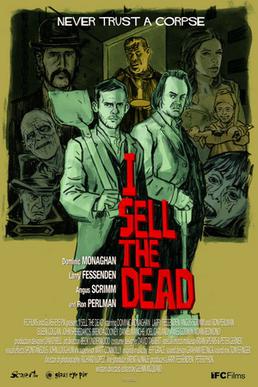
I Sell the Dead is a 2008 horror comedy, the feature film debut from Irish director Glenn McQuaid. It is a period film about grave robbing, starring Dominic Monaghan, Ron Perlman, Larry Fessenden and Angus Scrimm.
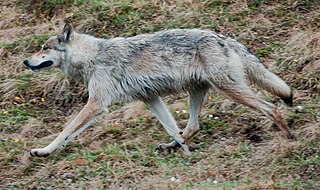
The Interior Alaskan wolf, also known as the Yukon wolf, is a subspecies of gray wolf native to parts of British Columbia, the Northwest Territories, Interior Alaska and Yukon.
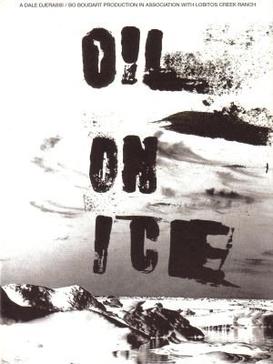
Oil on Ice is a 2004 documentary film directed by Bo Boudart and Dale Djerassi. It explores the Arctic Refuge drilling controversy in the Arctic National Wildlife Refuge (ANWR) and the impact of oil and gas development on the land, wildlife, and lives of the Gwich'in Athabascan Indians and Inupiat Eskimos.
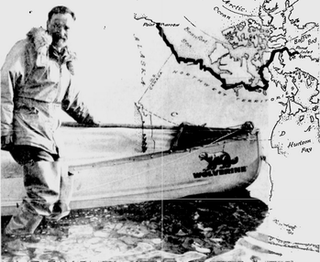
Anthony Dauksza was an American football player, film-maker, and outdoorsman. In 1971, he became the first person to traverse the Northwest Passage in anything other than a ship. Dauksza completed the 3,200-mile journey over the course of six summers on a solo canoe expedition.

Depraved is a 2019 American horror film written and directed by Larry Fessenden and starring David Call and Joshua Leonard. It is a modern version of Mary Shelley's Frankenstein.

The reindeer is a widespread and numerous species in the northern Holarctic, being present in both tundra and taiga. Originally, the reindeer was found in Scandinavia, eastern Europe, Russia, Mongolia, and northern China north of the 50th latitude. In North America, it was found in Canada, Alaska, and the northern contiguous USA from Washington to Maine. In the 19th century, it was apparently still present in southern Idaho. It also occurred naturally on Sakhalin, Greenland, and probably even in historical times in Ireland.


















